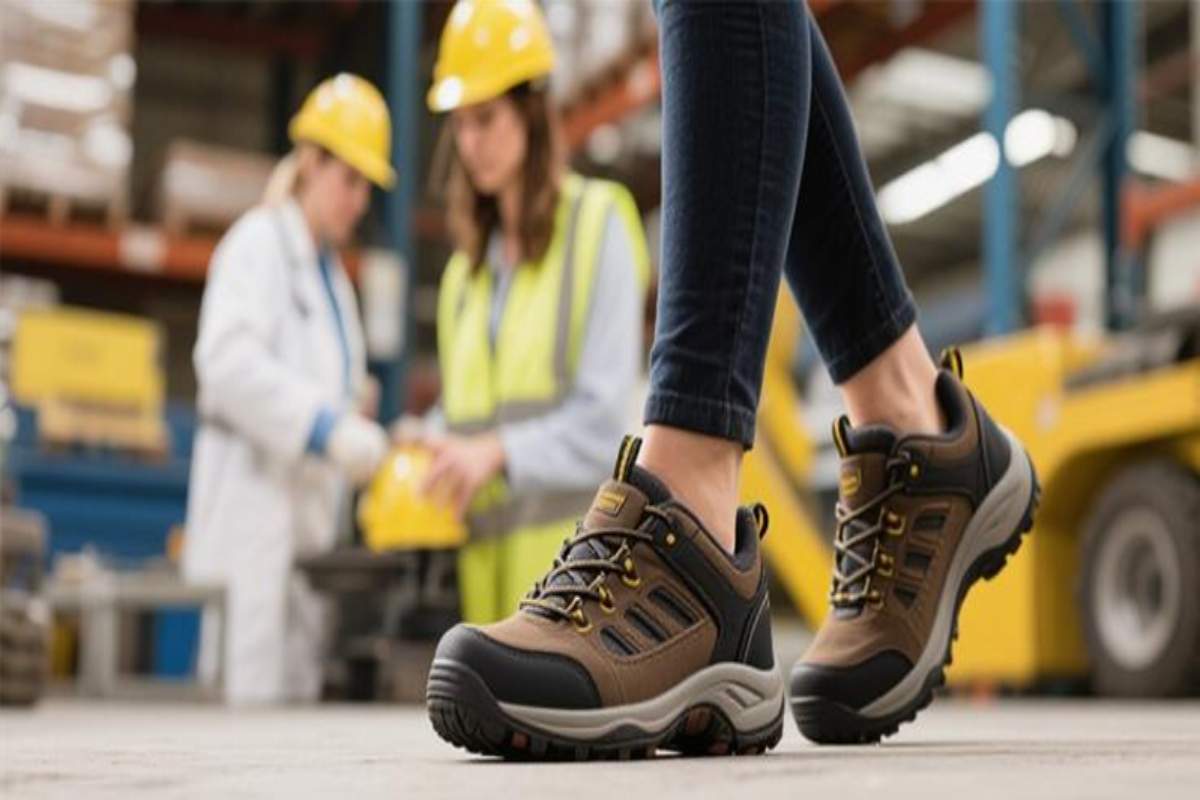In safety-intensive work environments such as manufacturing, healthcare, and
construction, women’s safety shoes serve as essential protective gear that directly
impacts work efficiency through their comfort level. Comfortable womens safety
shoes
must not only meet safety standards like impact resistance and puncture
resistance but also conform to female foot anatomy. These shoes ensure comfortable
movement during prolonged standing or walking, providing dual protection for both
safety and comfort– making them reliable partners in the workplace.
When selecting comfortable women’s safety shoes, it’s crucial to avoid the
misconception of prioritizing safety over comfort. Women’s feet have more delicate
arches and wider ankle spans compared to men, and they often work in environments
requiring constant walking or prolonged standing– all of which demand better shoe
fit and cushioning performance. Ill-fitting shoes can cause minor issues like foot
irritation or even serious foot problems. To choose shoes that are both safe and
comfortable, consider women’s foot characteristics when selecting shoe types,
materials, and design details.
Table of Contents
1. Identify women’s exclusive shoe design
2. Prefer breathable and soft upper material
3. Pay attention to the elasticity and anti-slip ability of the sole
4. Pay attention to the details of shoe support and cushioning
5. Control heel height and stability
6. Check the balance between toe protection and comfort
7. Try on the shoes and experience the work scene
8. Confirm security certification and brand protection
9.Final thoughts
Table of Contents
Identify women’s exclusive shoe design
Choose shoes designed for women, avoid shrinking versions of men’s shoes. Focus
on whether the toe width is suitable for the natural expansion of the toes, and the
ankle curve fits the female ankle line to reduce the risk of friction.
Preferred breathable and soft upper material
The upper is recommended to be made of top-grain leather or breathable mesh fabric.
The leather is soft and easy to fit the foot shape, and the mesh fabric enhances air
circulation; avoid hard artificial leather to prevent discomfort caused by stuffiness
and sweating.
Pay attention to the elasticity and anti-slip ability of the sole
The sole should have good resilience, which can be quickly restored after being
pressed to reduce the impact force of walking; the sole texture is clear and deep,
especially in wet environment, and the anti-slip performance is the key to safety.
Pay attention to the details of shoe support and cushioning
The insole should have arch protrusion design to disperse the pressure on the soles;
the soft lining is used in the shoe, and the stitching is smooth without bulging to
avoid friction with the skin of the feet.
Control heel height and stability
The height of the heel is recommended to be 2-3cm, which is both ergonomic and
improves walking stability; avoid high heels that cause unsteady weight and increase
foot fatigue.
Check the balance between toe protection and comfort
The anti-smash steel toe cap should be light and fit to the shoe type to reduce the
burden on the foot; the thick and soft lining of the toe cap can reduce the sense of toe
collision while protecting.
Try on the shoes and experience the work scene
Walk more, go up and down the steps, test the work socks to ensure that there is no
friction or foot bump, and leave a moderate space in the shoe to deal with slight
swelling of the feet.
Confirm security certification and brand protection
Choose products that have passed the national standard certification, check the
anti-smash and anti-puncture labels; give priority to well-known brands for better
quality and after-sales service.
Final thoughts
In conclusion, choosing comfortable women’s safety shoes requires balancing
safety performance with ergonomic design. This involves comprehensive
consideration of shoe type, material, and even the details of try-on. An ideal pair of
safety shoes not only ensures protection but also maintains foot comfort during work.
Such footwear empowers female professionals to tackle workplace challenges with
ease, achieving a win-win balance between safety and comfort.

